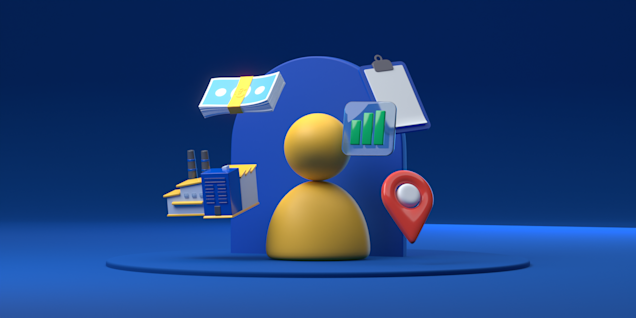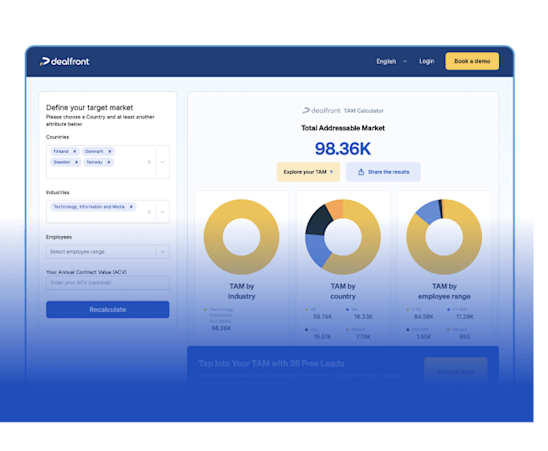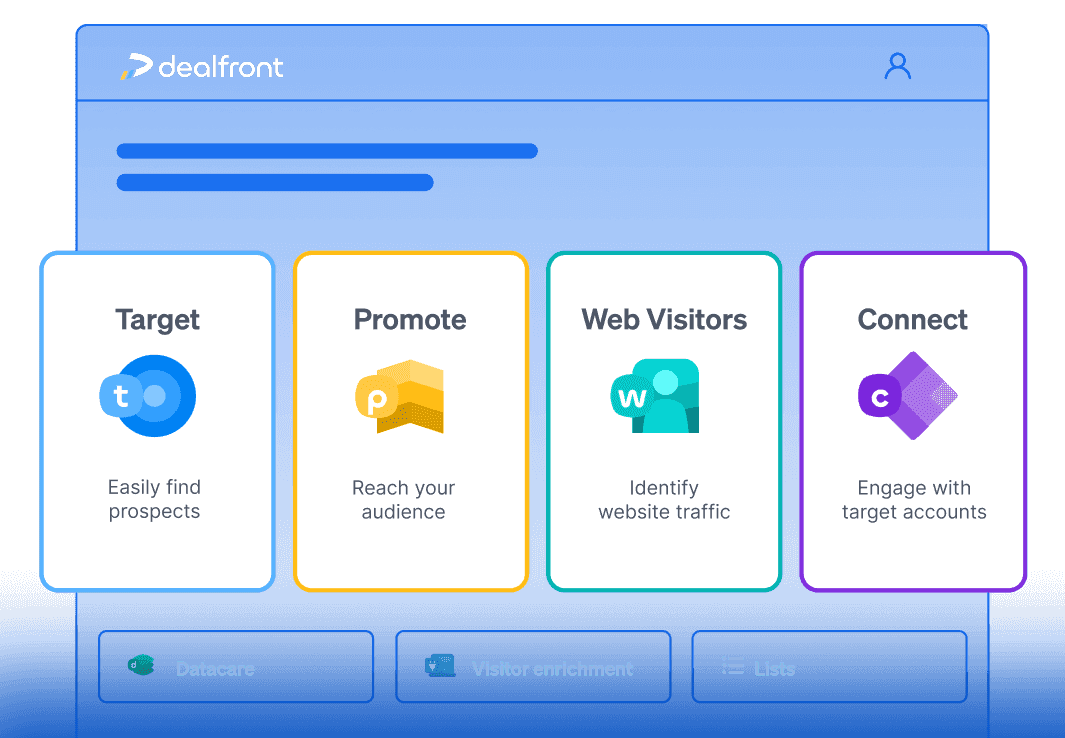Both sellers and buyers understand how complex the B2B sales environment is. B2B sales are notoriously difficult to close and often expensive for sellers because of several specific hurdles.
First of all, B2B buyers are more sophisticated; they prefer working with a vendor prepared to analyze the company and grasp the merits of their pain points rather than simply selling them a product. Besides, large organizations are known for having a long buying cycle, which creates a barrier in itself while also causing delays in trying to connect with other buyers.
Thus, as a B2B seller, you’ve got a tough job to do. The good news is that with the help of a well-rounded Ideal Customer Profile (ICP), you can lower your risk of wasting time on accounts that have no real chance of converting.
In this article, we'll delve into why it's vital to identify your ideal customer profile and how to achieve it effectively. If you want to understand who your most valuable customers are and how to win their business, keep reading.
What Is an Ideal Customer Profile?
In a nutshell, an Ideal Customer Profile (ICP) represents the most valuable buyer for your product or service. It is a hypothetical business that possesses all the characteristics that would make it a great fit for your company’s solutions.
Unlike targeting your total addressable market, creating an ICP allows you to highly personalize your communications and go after the companies that ideally align with your solution. In other words, ICP is a method of segmenting the market to find best-case accounts – businesses that you want to land and nurture.
You may be wondering, though, how is an Ideal Customer Profile different from the buyer persona, as it all sounds more or less the same, right? We solve the puzzle below.
What’s the Difference Between an Ideal Customer Profile and a Buyer Persona?
While an ICP and a buyer persona appear to be similar at first glance, they are, in fact, two distinct yet critical account-based marketing instruments.
The Ideal Customer Profile in B2B concentrates on the account's fit – the companies most likely to buy from you and actualize a high return for your business. On the other hand, a buyer persona describes the people involved in a purchasing decision in the organization that makes up your ICP.
Essentially, an Ideal Customer Profile zooms out on the entire company, its goals, challenges, and firmographic attributes. In contrast, a buyer persona focuses on the decision makers’ characteristics, enabling your marketing and sales team to be laser-targeted and geared towards the unique needs of your prospective customers.
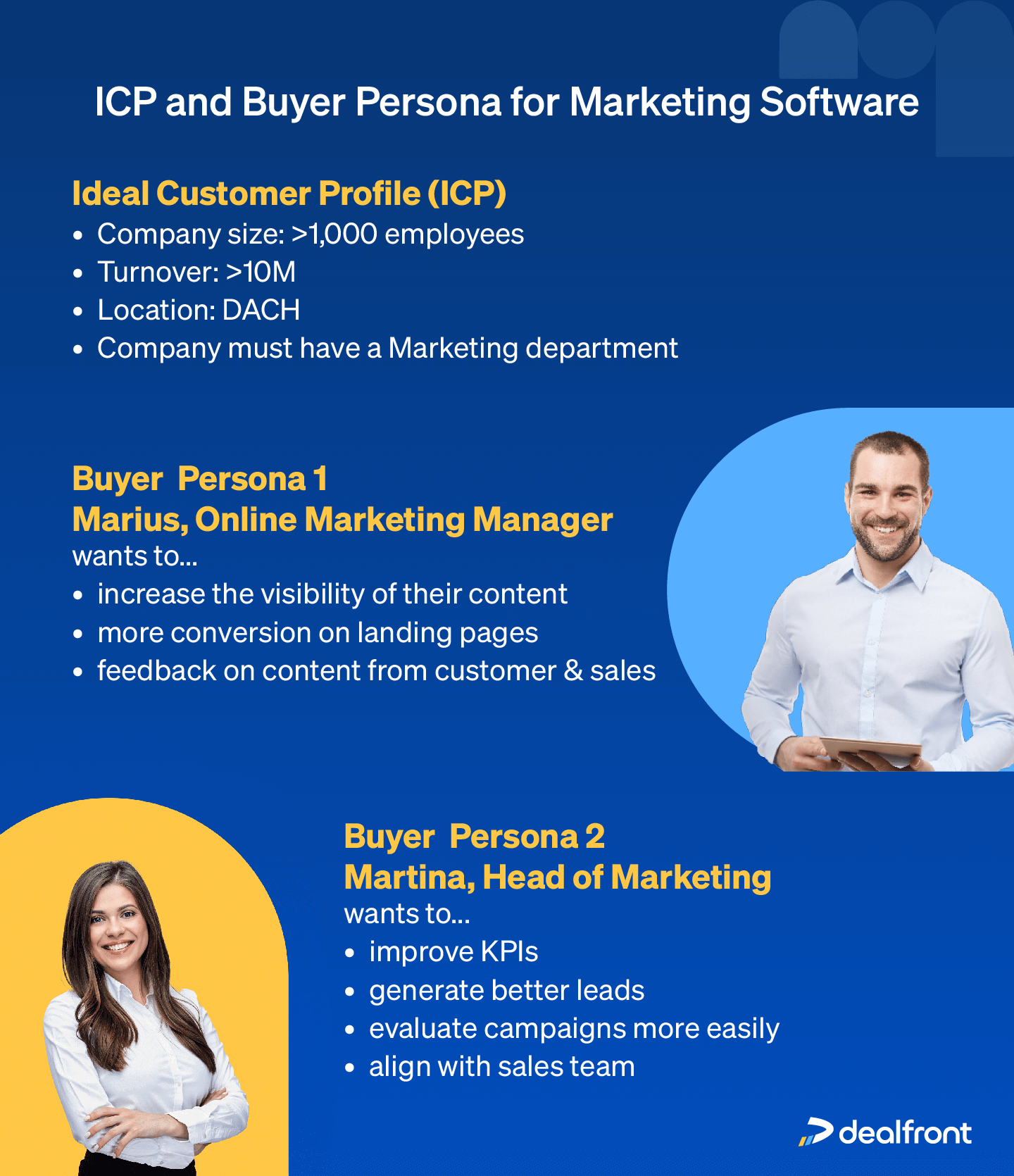
Five Reasons Why Do You Need an Ideal Customer Profile in B2B
Over 78% of B2B businesses identify quality leads as their top objective, so creating an ICP is something you shouldn’t take for granted. Here are five reasons why: With an ICP you can...
1) Target Those Leads that Have the Highest Success Potential for Using Your Solution
There is no point going after companies that do not have adequate budget, size, or other predetermined factors—these accounts are simply not a good fit. Using an Ideal Customer Profile, your business can easily qualify and target the right leads that you want to nurture into profitable long-term contracts. To this end, ICP can serve you as a lead selection criteria in B2B, shortening sales cycles, increasing conversion rates, and reducing the chances of customer churn.
2) Accelerate the Conversion of Leads
Creating a thorough Ideal Customer Profile that outlines how B2B lead generation is carried out will expedite your client acquisition process. Furthermore, by using other tools, such as historical sales data, intelligent marketing, sales intelligence software, and predictive learning, you can improve lead quality and increase closing rate.
3) Align Product, Sales, and Marketing to Win Business
A well-defined ICP makes your product, sales, and marketing departments work in tandem. Your product team will be able to refine product features to suit your Ideal Customer Profile, while the marketing department will produce personalized content and messaging. Finally, the sales team will know which accounts to prioritize.Achieving synergy between the three will ensure you’re hyper-targeted in your sales and marketing efforts in B2B.
4) Build Scalable and Iterative Tactics for Engaging and Converting Accounts
Your ideal customer profile defines common characteristics and patterns among prospective customers, so building a good one works as a framework that you can tweak and personalize in your future outreach efforts. There is no need to reinvent the wheel—if it’s done thoroughly, your ICP serves as a scalable tool to engage and convert your prospective customers.
5) Gain Higher ROI from Brand Loyalty and Increased Referrals
Getting the right B2B clients through the door is what ICP is for. But your task doesn’t end here. Your goal is to maximize your customers’ lifetime value which in turn will reward you with brand loyalty and lower marketing expenses. Loyal customers who genuinely derive value from your product or service are more likely to refer to your brand, potentially creating 65% of new business opportunities.
How Do You Create an Ideal Customer Profile in B2B?
Building a successful ICP is not guesswork—the more accurate it is, the higher quality leads will enter your sales pipeline. To accurately define your ideal customer, you need to tap into data and start with what you already know—your current customers.
1) List Down Your Most Valuable Customers
Identifying your most successful customers is a place to start when drawing up your ICP. It's beneficial to understand how your product or service helps them, their pain points, and how your company's product or service eliminates them.
Use your CRM and ABM systems to refine your list further. Both tools should give you information on the most profitable accounts, customers with the longest tenure, and the highest satisfaction levels.
2) Analyze Them
Now that you have your list of best clients, analyze them to understand why they are with you—what makes them stick? Don’t shy away from conducting direct interviews or customer surveys—it’s a popular and useful industry practice.
Wouldn’t it be nice to have your customers analyzed and clustered for you? Dealfront’s AI can do that for you! Just provide the tool with a list of your customers and let AI do the magic. See immediately which companies or customers are similar to each other. Plus: Dealfront’s B2B Lookalike feature can show you even more companies that fit your ICP on the basis of these clusters. Sounds too good to be true?
3) Draw a List of Firmographics
Firmographics alone help you to segment your market and target more qualified B2B prospects, so adding it to your Ideal Customer Profile is essential. Think about variables, such as:
Industry;
Location;
Company size (from a micro-enterprise to a corporation);
Structure or the legal status of the entity;
Product/Service details;
Performance metrics, including revenue and growth rate.
4) Refine Customers’ Pain Points
This step links to the second one. Why? Because when you conduct client interviews, you will hear their challenges and motivations. Systemize these insights, so you can fill your ICP with qualitative data that gives a deeper understanding of how to approach your prospects.Creating a profile for your ideal customer in B2B is about observing patterns and trends while leveraging data to get a 360-degree view of the businesses you want to target.
5) Outline Your Business’s Unique Selling Proposition
This part is about you and your business. What makes you unique, and why should prospective customers go with you, not your competition? A unique selling proposition defines the strengths and benefits of your product and how your solution (not your competitor’s!) can address your customer’s most pressing issue.

6) Finalize Your ICP Template and Revisit Regularly
Your ICP needs to be in sync with developments in the market and the customer feedback, so make sure you review and revise it regularly.
Don’t Forget the ICP Criteria Important to You
When it comes to ICP variables, we must recognize that an umbrella approach may not be ideal for every business. Thus, the determining criteria must be adjusted as per your objectives and specific factors that influence the buying behavior of your prospective customers.
Step 1: Search for Companies with Primary Criteria
A good strategy to approach the Ideal Customer Profile criteria is to look at the quantitative data, such as turnover, team size, industry, and region. This should help you weed out many businesses that simply don’t have the resources to buy your product.
Step 2: Use Secondary Criteria to Narrow Down Your ICP
Now that you have a broad list of companies, you can delve even further, looking at qualitative or secondary factors, such as their current technographics, sales trigger events, and employee profiles.
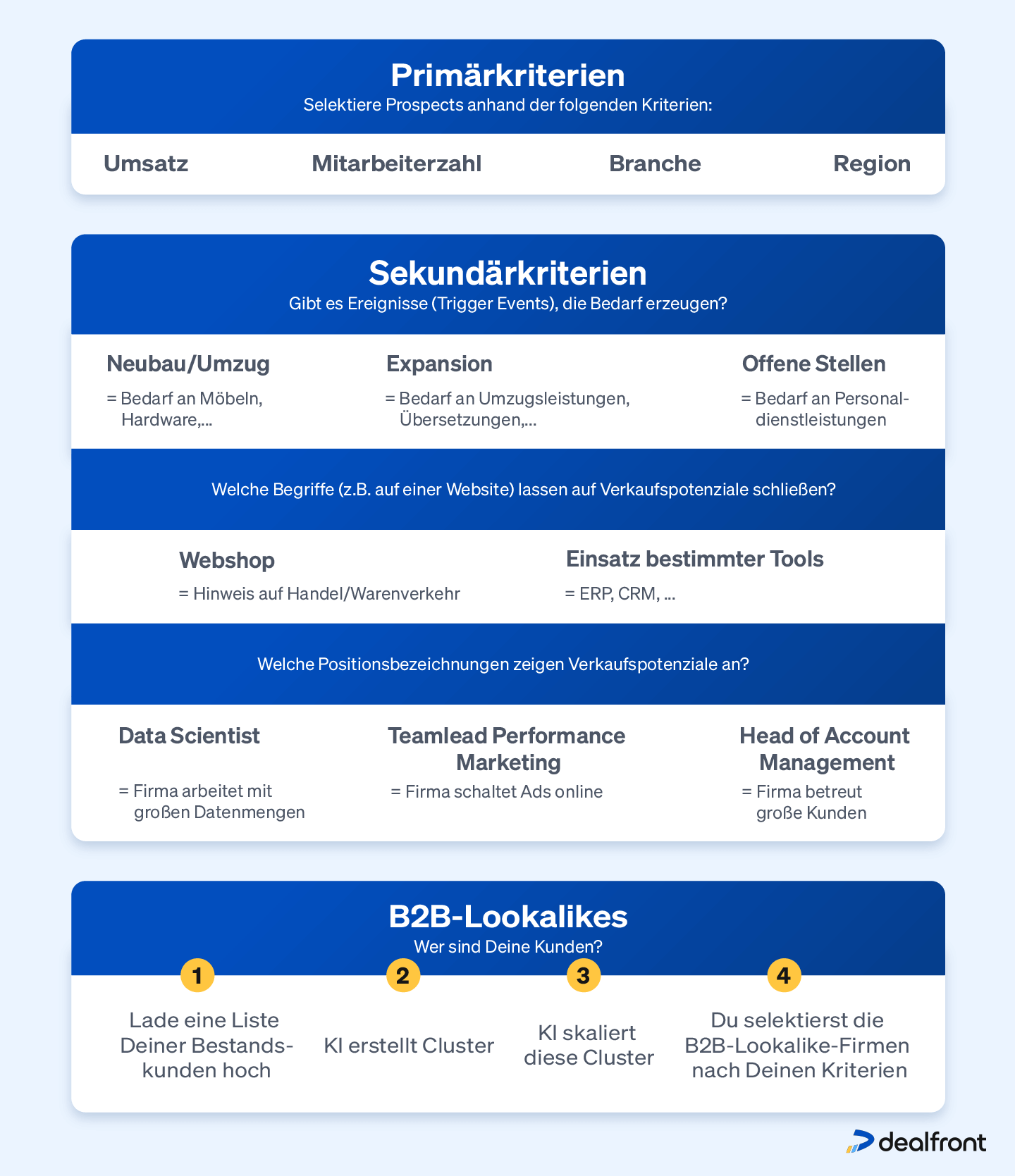
Primary and secondary criteria for determining your ICP
Is your target customer, for example, anticipating any significant events, such as opening new offices, which creates demand for new hardware or software, or are they intending to open new positions requiring recruitment support?Likewise, details such as certain job positions or titles can also help identify targets. Data Scientist equals an organization with large volumes of data. Microsoft Project Manager—a business that uses Microsoft.The more data points you manage to address, the more targeted your outreach will be.
Step 3: Consider Using B2B Lookalikes
If you already enjoy a solid customer base, it’s always worth considering the lookalike modeling that allows you to replicate successful leads. Targeting an audience that already fits your business puts you in front of the prospects that are likely to convert.
Tools That Help Define Your Ideal Customer Profile in B2B
Creating the Ideal Customer Profile seems like a daunting task, but you can automate the process with the help of a few MarTech tools.
Sales Intelligence
Sales Intelligence tools do not only help you narrow down your target accounts but will also provide you automatically with high-quality B2B leads.
Dealfront is a sales intelligence tool based on AI that helps companies target their ideal audience, generate more high-quality B2B leads, close new deals, and increase revenue.The unique crawler technology dives into online content to stitch together primary and secondary data, ranging from firmographics, key financials, and trigger events to current news and B2B lookalikes that match your ICP. It’s not a typical program that just scratches the surface.
Dealfront’s Sales Intelligence Platform goes as deep as company websites, social media channels, and national trade registers—uncovering great lead-generating potential for your business. Imagine the power of knowing the external and internal factors that are affecting your targeted customers and approaching them with a highly-personalized message. By being agile and more nuanced in your marketing and sales tactics and capitalizing on AI data analytics, you can secure profitable contracts and grow your business.
Customer Relationship Management System (CRM)
Your CRM platform is another tool that can help you in your ABM efforts. It’s where existing and prospecting B2B customer data is centralized, allowing you to synthesize the right data points.
Besides, a CRM system can help identify which B2B customers best suit your Ideal Customer Profile, qualifying them for demand and lead generation campaigns and upselling or cross-selling.
Web Tracking
An effective addition - especially for your ABM campaigns - can be web tracking tools such as Leadfeeder by Dealfront.
Web analytics allow you to capture B2B leads from inbound traffic by unveiling your visitors, what they are searching for on your website and the channel that brought them there. Later, you can easily see, segment, and move your ICP leads through the sales pipeline using pre-configured filters.
Intent Data
Laconically speaking, intent data combines data points and insights into user behavior, identifying ideal customers. Everything from how long a prospect stays on the website to which blog posts they read or which ebooks they download are signals that give you granular insights and allow you to personalize your lead generation campaigns in B2B.
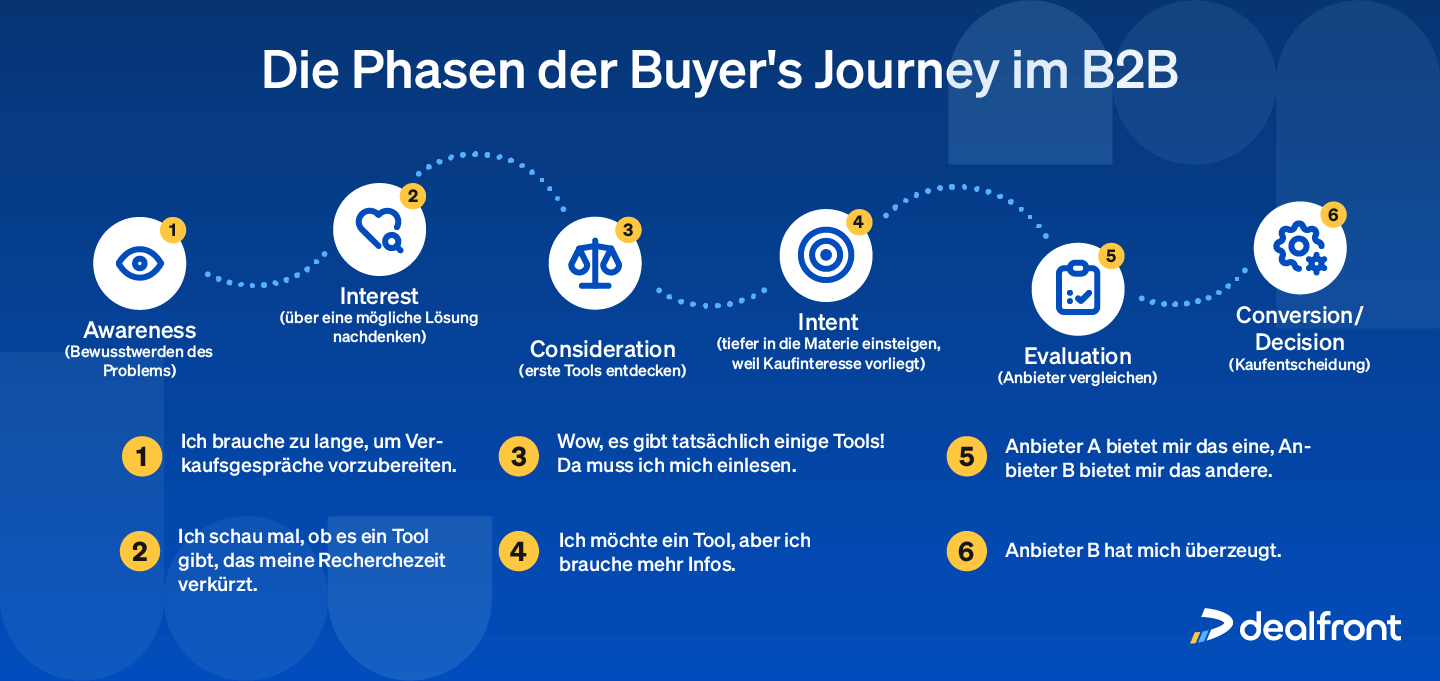
Final Thoughts: Why an ICP Is a Necessity in B2B
Each B2B company’s goal is to arrive at the closed-won point in the sales funnel. Serving your customers is challenging in today's world of anxious B2B buyers, tight budgets, and numerous stakeholders involved in the buyer's journey.
Pursuing leads that do not qualify is a resource-heavy activity that prevents you from closing deals with the right buyers. An Ideal Customer Profile is what allows you to accurately profile companies that would benefit from your offering.
